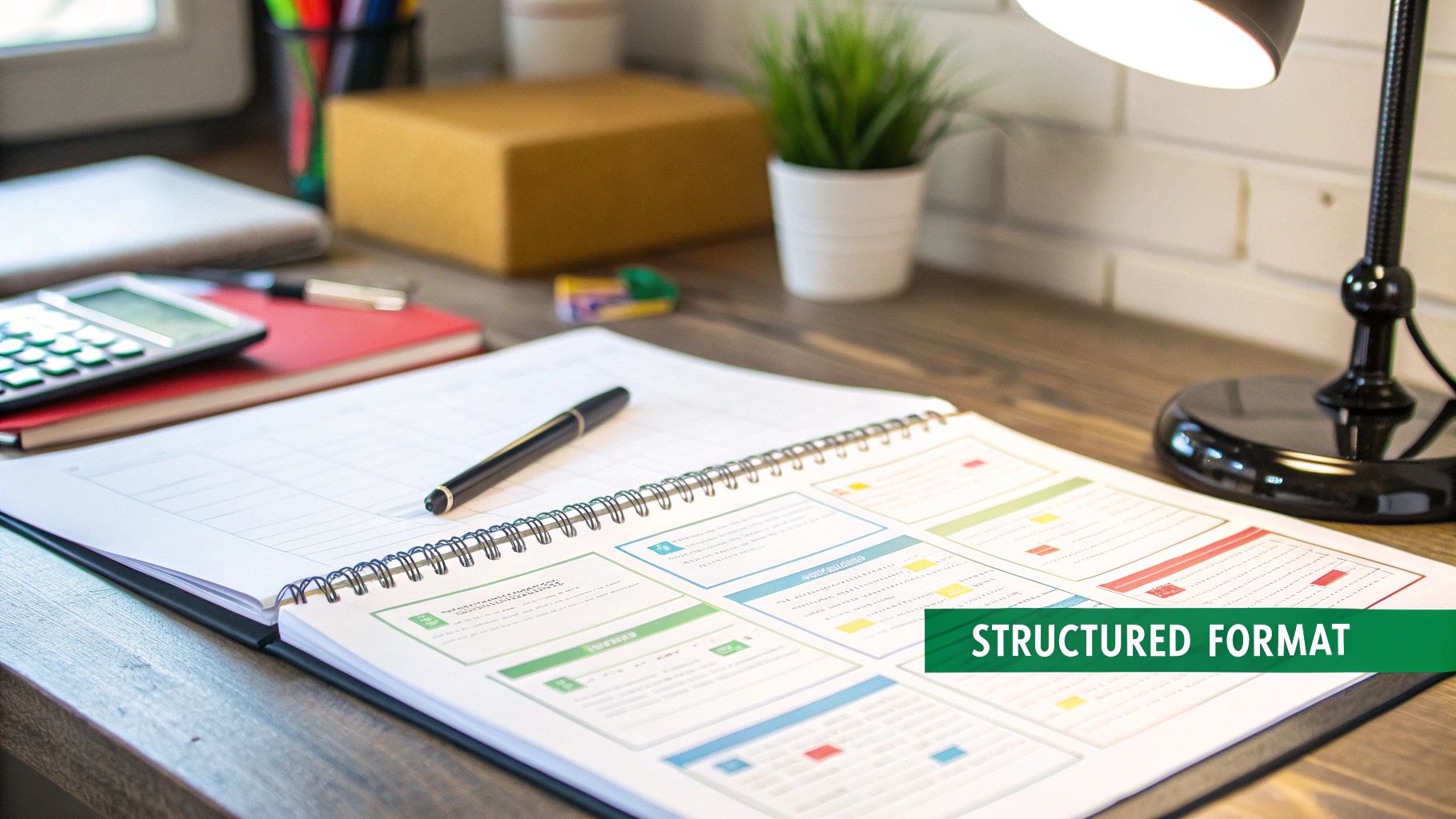Learn how to write technical document with simple steps and expert tips for impactful clarity.

Technical documentation isn’t just about static PDFs anymore. It’s a dynamic and crucial part of any successful product or service. This shift is driven by increasingly complex technology and a growing demand for clear, user-friendly guidance. Think about assembling a complicated piece of furniture without instructions. Frustration and a poorly built end product are almost guaranteed. Similarly, subpar technical documentation can lead to user frustration and, ultimately, product failure.
This focus on user-centric documentation has redefined the technical writer’s role. They’re no longer simply conveying information; they’re experience architects. They craft intuitive and accessible documentation that seamlessly integrates with the user’s experience. This means writing effective technical documents has taken on a new level of importance. Technical writers must deeply understand their audience and tailor content to meet diverse needs, from beginners to experts.
Today’s users expect more than just information. They demand a smooth and intuitive experience. This includes readily available documentation that addresses their specific needs, precisely when they need it. Furthermore, the format of this documentation needs flexibility and adaptability.
This expectation has spurred the growth of interactive tutorials, video walkthroughs, and searchable knowledge bases. Yet, text-based documentation remains essential for complex topics that demand detailed explanations.
The demand for skilled technical writers reflects this evolving landscape. Writing technical documents is now a well-compensated and expanding field. As of 2023, the Bureau of Labor Statistics reported a mean annual wage of $86,620 for technical writers in the United States. Demand is projected to increase by 10-11% by 2026, highlighting the importance of technical documentation across diverse industries.
The technical writer’s role goes beyond traditional content creation. They’re also at the forefront of adapting to new technologies. This includes integrating AI, AR, and IoT to create interactive and accessible documentation experiences.
Imagine using augmented reality (AR) to overlay instructions directly onto a product. Users see exactly how to perform a task in real-time, improving understanding and minimizing errors. This means technical writers need to stay ahead of the curve, embracing new tools and technologies to create truly impactful documentation.
These advancements ensure technical documents bridge the gap between complex information and user understanding. As technology continues to evolve, the role of the technical writer will only become more vital in shaping how users interact with and understand it.

Creating effective technical documentation isn’t about jumping right into writing. It’s a strategic process, starting with careful planning. This ensures the final document truly addresses user needs and fulfills its purpose. Just as a building requires blueprints, a technical document needs a well-defined plan.
A crucial planning aspect is audience analysis. This involves identifying who will use the document and understanding their technical skills, needs, and goals. For instance, documentation for everyday users will look quite different from documentation created for developers. This understanding shapes the content, writing style, and even the document’s format.
Besides understanding the audience, it’s important to establish clear documentation objectives. What specific problem will this document solve? What should users be able to accomplish after reading it? These questions focus the content, ensuring it aligns with both user expectations and business goals. The document should be helpful to the reader and valuable to the organization.
Technical documents often tackle complex topics, requiring input from subject matter experts (SMEs). However, these experts might not always be available or skilled in explaining complex information clearly. Developing effective strategies for obtaining and structuring this knowledge is essential. This could involve interviews, workshops, or observing SMEs to understand their work processes.
Turning raw information into a well-organized document demands careful structuring. This is where creating an outline becomes vital. A solid outline acts as a roadmap, arranging the content logically for a natural flow. It also helps spot any missing information early on. Think of the outline as a framework – it supports the document’s structure.
Before diving into writing, use this checklist to summarize the planning stages and ensure all essential elements are covered. It guides you in creating technical documents that are comprehensive, user-friendly, and effective.
The table below, “Technical Document Planning Checklist”, provides a comprehensive guide to ensure you’ve thought through all the necessary planning steps before you start writing. It outlines each phase, the key activities involved, and the expected deliverables.
This checklist highlights the importance of understanding your audience, defining clear objectives, gathering expert knowledge, and creating a structured outline. By addressing these elements, you’re setting yourself up for success.
By focusing on these strategic planning elements, technical writers can create documentation that’s not just informative but also a valuable tool that empowers users. A well-planned document saves time and reduces confusion, ultimately contributing to a positive user experience. This leads to crafting content that truly resonates with users and meets their needs.

Technical documents often prioritize information density. Unfortunately, this can lead to reader frustration. This section explores writing technical documents that effectively communicate complex information while remaining accessible and engaging. The key is balancing clarity with comprehensive detail. Focus on how real users interact with and process technical concepts.
Plain language doesn’t mean simplifying content. It means using clear, concise language that avoids jargon and technical terms whenever possible. This makes content accessible to a wider audience, including those without deep technical expertise.
For example, instead of writing “utilize the aforementioned functionality,” write “use this feature.” Small changes like this can make a big difference in clarity.
Additionally, structuring information logically is crucial. Present information in a way that mirrors how people learn. Start with basic concepts before moving to more complex ones. This stepwise approach aids comprehension and prevents users from feeling overwhelmed. You might be interested in How to master code documentation.
Technical documents often include step-by-step procedures. These procedures must be clear, accurate, and easy to follow. Each step should be concise, using action verbs and avoiding ambiguity.
For instance, instead of writing “Ensure proper configuration,” write “Connect the cable to port A.” Specific instructions are key for user success.
Furthermore, including visuals can significantly enhance understanding. Diagrams, flowcharts, and screenshots can break up dense text and quickly convey complex information. To streamline your documentation process, consider establishing standard operating procedures.
A single technical document may cater to users with varying technical expertise. Effectively addressing this diverse audience requires carefully tailoring the content. The goal is to inform all users without alienating any particular group.
One approach is to provide different levels of detail. Consider using expandable sections or separate documents for advanced users. This targeted approach ensures beginners have access to essential information without being overwhelmed. Simultaneously, experienced users can easily find in-depth explanations.
This is especially important considering the evolving role of technical writers. They are increasingly becoming architects of the self-service era. They design user experiences through micro-learning modules and interactive documentation. By 2024, technical writers were driving innovation in content delivery, shifting from reactive to proactive approaches. Learn more about the evolving role of technical writers. This evolution underscores the strategic importance of high-quality, user-focused documentation. It’s become vital for achieving customer satisfaction and retention.

Creating effective technical documentation involves more than just clear writing. Design plays a vital role in how users engage with and understand the material. This section explores how thoughtful design choices can transform technical documents from necessary evils into valuable resources. We’ll delve into the psychology of information consumption and apply those principles to visual presentation.
Information architecture is the foundation of user-friendly documentation. It involves organizing content logically and intuitively so users can quickly find what they need. Imagine a well-organized library: clear signage, a logical categorization system, and a user-friendly catalog are essential.
Similarly, well-structured documents should have clear headings, a comprehensive table of contents, and a searchable index. These elements save users time and frustration, allowing them to focus on learning instead of searching. A streamlined approach ensures quick access to the information users need.
Visuals are crucial for conveying complex technical information. A flowchart can clarify a complicated workflow more effectively than paragraphs of text. An annotated screenshot can demonstrate a software process much faster than a written description.
Choosing the right visual for the right context is key to enhancing understanding and engagement. This involves understanding the strengths and limitations of each visual element.
To help you choose the most impactful visuals, let’s examine a comparison of different visual elements and their ideal uses. The following table provides a quick reference guide for selecting the most effective visuals for your documentation.
The table below illustrates the strengths and weaknesses of various visual elements and provides example use cases to demonstrate their practical application. By understanding these nuances, technical writers can make informed decisions about which visuals best support their content.
This comparison highlights the importance of selecting visuals strategically. Choosing the right visual element significantly impacts clarity and user engagement.
Typography and layout significantly impact readability. Font choice, line spacing, and white space influence how easily users process information. Research shows that using clear fonts like Arial or Calibri and maintaining appropriate line spacing improves comprehension.
Incorporating ample white space also enhances readability. Using a consistent font size and style, breaking up large text blocks, and employing headings and subheadings improve visual flow and comprehension.
Intuitive navigation is essential for user satisfaction. Clear links, a consistent navigation structure, and robust search functionality allow users to access information effortlessly. Think of a well-designed website: clear menus, easy-to-find search bars, and descriptive links are critical.
These elements enable users to navigate documentation seamlessly, finding what they need quickly. By prioritizing these design elements, technical writers can transform their documents from mere information repositories into truly user-friendly resources.
The tools you select have a direct impact on the quality and efficiency of your technical documentation. This section moves beyond marketing buzzwords and explores practical documentation technologies that deliver real value. We’ll look at how modern Content Management Systems (CMS) are changing the way teams collaborate, enabling geographically dispersed teams to maintain consistent documentation at scale. We’ll also discuss how selecting the right technology can improve your workflow and enhance your content. For a deeper dive into this topic, check out our playbook for documentation as code.
Modern Content Management Systems (CMS) are vital for managing complex documentation projects. They offer key features such as version control, collaborative editing, and centralized storage. This allows multiple writers to work on the same document concurrently, eliminating the risk of overwriting changes. Think of a CMS as a central hub for all your documentation-related activities.
Structured authoring is a powerful method that utilizes predefined templates and content modules. This approach promotes consistency and efficiency, especially beneficial for extensive documentation sets. For example, you can create reusable modules for frequently documented tasks or procedures, ensuring consistent language and style throughout your documentation. This also simplifies updates; changing a module in one place automatically updates it everywhere it’s used.
Technology constantly reshapes how we create and use technical documents. Artificial Intelligence (AI), automated quality checks, and interactive documentation formats are just a few examples of this transformation. AI tools can assist with tasks like grammar checking, style suggestions, and even content generation, allowing writers to focus on strategy and user experience.
It’s important to remember that while AI offers powerful capabilities, human expertise remains essential. AI is evolving the role of writers into AI-assisted knowledge architects, allowing them to create targeted content for various users. Learn more about the role of technical writers in a post-AI world. This collaboration between writers and AI enhances content creation and usability.
The “best” technology is determined by your specific needs. Factors like team size, budget, and the type of documentation you create should guide your selection process. A small team might find a simple cloud-based editor sufficient, while a large enterprise might require a robust CMS with comprehensive features. The right tools empower you to write effective technical documents.
Here are some best practices to maximize the effectiveness of your documentation tools:
Creating technical documentation isn’t a one-and-done task. Publishing is just the first step. It’s the point where you begin gathering vital insights into how effective your documentation truly is. This section explores how to systematically evaluate and refine your content, taking it from adequate to exceptional. Just like software requires rigorous testing, so too should your documentation.
Usability testing is crucial for uncovering potential issues before they affect your users. This involves observing users as they interact with your documentation. Can they easily locate the information they need? Are they able to successfully follow the instructions provided?
For example, observe users as they attempt a specific task using only your documentation. Watch for points where they struggle, get confused, or succeed. These observations provide valuable insights for improving clarity and usability.
This process often reveals unexpected problems. Maybe a vital step is missing from a procedure, or a key term is poorly defined. Identifying these roadblocks early prevents user frustration and ensures a smoother experience.
Collecting user feedback is essential for ongoing improvement. However, the feedback must reflect actual user experience, not just opinions. Ask specific questions about their interaction with the documentation. For instance, instead of asking, “Did you find this document helpful?”, ask, “Were you able to complete task X using this document?”
Consider using surveys, feedback forms, or even user interviews. These methods provide structured ways to gather data, uncovering patterns and trends that can inform revisions. This data-driven approach is far more effective than relying on anecdotal evidence.
Implementing a structured review process guarantees accuracy and consistency without endless revisions. This means establishing clear roles and responsibilities for reviewers. Who is responsible for verifying technical accuracy? Who checks for clarity and style? Defining these roles upfront streamlines the review process.
Using a style guide and a standardized checklist helps reviewers focus on specific criteria. This systematic approach ensures thorough reviews and prevents common errors from slipping through the cracks.
Beyond user feedback and reviews, tracking key metrics provides valuable data on documentation effectiveness. Page views alone don’t tell the whole story. Consider tracking metrics like task completion rate, time spent on a page, and search terms used within your documentation.
For example, if users consistently struggle with a particular procedure, the related documentation likely requires revision. Monitoring these metrics allows you to pinpoint areas for improvement and measure the impact of your changes.
Quality standards set a benchmark for consistent excellence across all your documentation. These standards define expectations for clarity, accuracy, consistency, and usability. Think of them as the blueprint for your documentation, ensuring it consistently meets specific criteria.
These standards should be clearly documented and communicated to everyone involved in creating and reviewing technical documentation. This shared understanding ensures everyone works towards the same goal: creating high-quality, user-focused content.